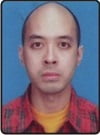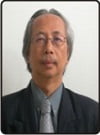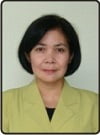Socio-Historical and Cultural Influences on Visual Differentiation of Wayang Kulit of Cirebon, West Java, Indonesia: A Case Study of the Attributes Differentiation of Priest Drona Puppets
Abstract
ABSTRACT: The “wayang kulit” (shadow play) is a traditional art of theatre that popular in Java and Bali, and considered as a multidimensional state of art which consists dimension of theatrical, literature, philosophy, moral education, and not to mention visual arts and crafts dimension as well, in which is the main discussion of this paper. There are several styles of Javanese “wayang kulit” based on their geographical area. Among those, Cirebon style possesses unique visualization which has resemblance to early phase of Islamic era “wayang” puppet. One of the character transformations done which includes personality and visual descriptions happened to the Priest Drona, the vital character of Mahabharata that role as “guru” (teacher) to both Pandawas and Kurawas, who was trapped inside dilemma between his warring disciples. In the adaptation version of Javanese shadow play, for some various and speculative reasons, Drona has been altered into an antagonistic character, and reached its extreme point of alteration as an absolute evil character in Cirebon version. Cirebon’s history, culture, and plural society gave significant influence on this. Drona puppets themselves have unique and specific visual attributes in comparison to other main characters puppets, and possess highly symbolic meaning beneath them. These facts told us that the character has a great significance. Later, these negative connotations of Drona was being sharpened and escalated in accordance of socio-historical events and local phenomenon, thus producing visual differentiation within the Drona puppets.
KEY WORDS: “Wayang kulit”, Drona character, Cirebon area, visual, differentiations, attributes, socio-historical events, and symbolic meaning.



About the Authors: Moh Isa Pramana Koesoemadinata, M.Sn. is a Student of Doctoral Program at the Faculty of Visual Arts and Design ITB (Bandung Institute of Technology), Jalan Ganesha No.10, Tamansari, Bandung, West Java, Indonesia. Prof. Dr. Setiawan Sabana and Dr. Nuning Damayanti Adisasmito are Lecturers at the Faculty of Visual Arts and Design ITB. Corresponding author is: dronacarya@yahoo.co.id
How to cite this article? Koesoemadinata, Moh Isa Pramana, Setiawan Sabana & Nuning Damayanti Adisasmito. (2013). “Socio-Historical and Cultural Influences on Visual Differentiation of Wayang Kulit of Cirebon, West Java, Indonesia: A Case Study of the Attributes Differentiation of Priest Drona Puppets” in TAWARIKH: International Journal for Historical Studies, Vol.5(1) October, pp.43-56. Bandung, Indonesia: ASPENSI [Asosiasi Sarjana Pendidikan Sejarah Indonesia] and UVRI [Universitas Veteran Republik Indonesia], ISSN 2085-0980.
Chronicle of the article: Accepted (August 5, 2013); Revised (September 9, 2013); and Published (October 28, 2013).
Full Text:
PDFReferences
Anderson, Benedict R.O’G. (2000). Mitologi dan Toleransi Orang Jawa. Yogyakarta: Penerbit Qalam, translation.
Angst, Walter. (2007). Wayang Indonesia: The Fantastic World of Indonesian Puppet Theatre. Germany: Verlag Stadler.
Budiono, Kuswa. (1986). “Rupa Wayang Kulit Cirebon”. Unpublished Undergraduated Academic Exercise. Bandung: Studio Seni Patung, Jurusan Seni Murni FSRD-ITB [Faculty of Visual Arts & Design, Bandung Institute of Technology].
Cohen, Matthew Isaac. (1997). “An Inheritance from the Friends of God: The Southern Shadow Puppet Theatre of West Java, Indonesia”. Unpublished Ph.D. Dissertation. USA: Faculty of the Graduate School of Yale University.
Damayanti Adisasmito, Nuning et al. (2007). “Estetika & Makna Simbolik pada Wayang Kulit Cirebon: Upaya Memperkaya Konsep Visual Seni Rupa Indonesia Masa Kini dan Masa Depan”. Unpublished Research Report. Bandung: Faculty of Visual Arts & Design ITB [Bandung Institute of Technology].
Djajasoebrata, Alit. (1999). Shadow Theatre in Java: The Puppets, Performance & Repertoire. Amsterdam: The Pepin Press.
Feldman, Edmund Burke. (1967). Art as Image and Idea. New Jersey: Prentice Hall Inc. Englewood Cliffs.
Geertz, Clifford. (1989). Santri, Abangan, dan Priyayi. Jakarta: Pustaka Jaya, translation.
Guritno, Haryono & Pandam. (1989). Lordly Shades: Wayang Purwa Indonesia. Jakarta: PT Jayakarta Agung Offset.
Hardjasaputra, A. Sobana. (2011). Cirebon dalam Lima Zaman: Abad ke-15 hingga Pertengahan Abad ke-20. Bandung: Dinas Pariwisata dan Kebudayaan Provinsi Jawa Barat.
Hasyim, Rafan S. (2011). Seni Tatah dan Sungging Wayang Kulit Cirebon: Pengantar Reka Visual dan Makna Simbolik. Cirebon: Dinas Kebudayaan, Pariwisata, Pemuda dan Olahraga Kabupaten Cirebon.
Hauser, Arnold. (1982). The Sociology of Art. London: Routledge & Kegan Paul.
Holt, Claire. (2000). Melacak Jejak Perkembangan Seni di Indonesia. Bandung: Penerbit Artline dan Masyarakat Seni Pertunjukan Indonesia, translation.
Interview with puppeteer Arma, famous wayang performers of Northern Cirebon, on 9th October 2012.
Interview with puppeteer Maruna, famous wayang performers of Northern Cirebon, on 2nd October 2012.
Interview with wayang kulit craftsmen in Cirebon, West Java, Indonesia, on 17th October 2012.
KPSB [Kantor Pariwisata Seni & Budaya]. (2003). Cerita Galur Wayang Kulit Purwa Cirebon, Bagian 1: Kasultanan Kanoman. Cirebon: Kantor Pariwisata Seni dan Budaya Kabupaten Cirebon.
Kusnandar, Dadang. (2012). Cirebon Silang Budaya. Yogyakarta: Gapura Publishing.com.
Lim, Lawrence & Jill Gocher. (1990). “Cirebon” in The Times Travel Library Singapore: Times Editions. Singapore: Times Publishers.
Pendit, Nyoman S. (1970). Mahabharata: Pertempuran Hebat di Kurushetra. Djakarta: Penerbit Bhratara.
Pramana Koesoemadinata, Moh Isa. (2007a). “Tasawuf dan Perupaan pada Wayang Kulit Purwa Cirebon dan Surakarta”. Unpublished Magister (M.Sn.) Thesis. Bandung: Postgraduate Program at the Faculty of Visual Arts & Design ITB [Bandung Institute of Technology].
Pramana Koesoemadinata, Moh Isa. (2007b). “Unsur Tasawuf dalam Perupaan Wayang Kulit Purwa Cirebon dan Surakarta” in ITB Journal of Viusal Art and Design, Vol.1, No.2 [August].
Purjadi. (2007). Pengetahuan Dasar Wayang Kulit Cirebon. Cirebon: Badan Komunikasi Kebudayaan & Pariwisata Kabupaten Cirebon.
Ricklefs, M.C. (2006). “The Birth of Abangan” available also in http://www.kitlv-journals.nl/index.php/btlv/article/viewfile/2/2 [accessed in Bandung, West Java, Indonesia: 14 April 2013].
Rosidi, Ajip. (1991). Rikmadenda Mencari Tuhan: Sebuah Lakon Wayang Carangan Ciptaan Dalang Abyor. Jakarta: Yayasan Obor Indonesia.
Simuh. (1995). Sufisme Jawa: Transformasi Tasawuf Islam ke Mistik Jawa. Yogyakarta: Yayasan Bentang Budaya.
Subramaniam, Kamala. (2006). Mahabharata. Surabaya: Penerbit Paramita.
Sunardjo, Unang. (1983). Meninjau Sepintas Panggung Sejarah Pemerintahan Kerajaan Cerbon, 1479 — 1809. Bandung: Penerbit Tarsito.
Van den Berg, L.W.C. (2010). Orang Arab di Nusantara. Depok: Komunitas Bambu, translation.
